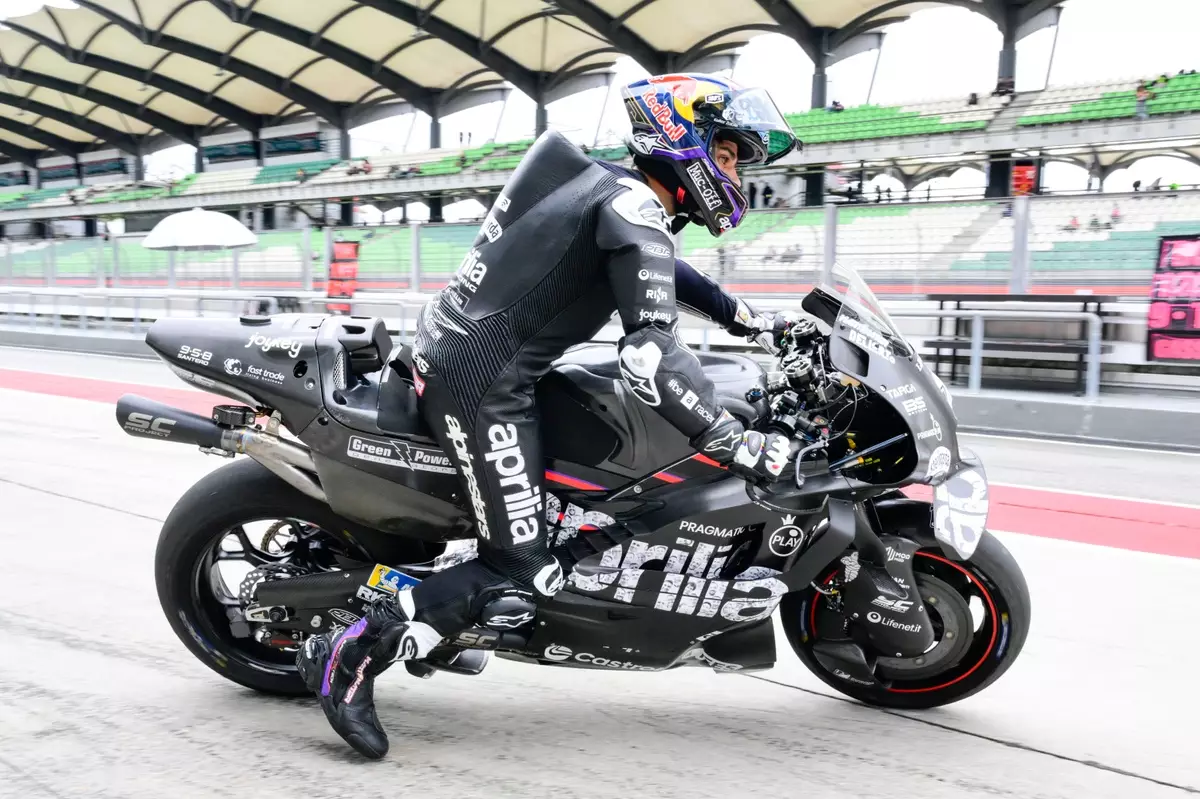In the world of MotoGP, safety is paramount, and any incident involving a top rider demands immediate attention and thorough investigation. This was underscored by the shocking crash of reigning world champion Jorge Martin during the pre-season testing at Sepang. The incident, characterized by a severe highside that left Martin face down on the asphalt, raised alarm bells not only for Aprilia Racing but also for the entire racing community. As the curtains lifted on the testing event, Martin’s mishap cast a shadow over the proceedings, propelling both the manufacturer and Michelin into the spotlight.
The ongoing discourse revolves around Michelin’s assertion that a drop in tire temperature contributed significantly to Martin’s crash. Specifically, Michelin reported that sensors had detected an abnormal 15°C decrease in the temperature of the inner rear tire. However, this explanation has failed to convince Aprilia’s management, who promptly disputed this narrative based on their telemetry data. Massimo Rivola, Aprilia’s motorsport boss, emphasized the absence of any mechanical faults with the bike and defended Martin’s riding technique against claims of an error in judgment.
Rivola’s call for transparency is telling. His inquiry into the history of the tire compound, including its potential long-term storage, raises legitimate concerns about tire management and safety protocols. This situation becomes even more alarming when considering that the integrity of tire performance can significantly impact rider safety and race outcomes.
The aftermath of the crash placed Martin in a precarious position, as he suffered serious injuries—a single fracture to his right hand and several fractures on his left foot. Following emergency treatment at a local hospital, Martin returned home to Barcelona, where he underwent successful surgery. Esteemed surgeon Dr. Xavier Mir performed the procedure on Martin’s right hand, which was a displaced fracture of the fifth metacarpal. According to Dr. Mir’s medical assessment, while recovery will commence shortly, Martin’s participation in upcoming events remains uncertain.
The team’s optimistic outlook, albeit tentative, is bolstered by the rider’s determination. As a competitor known for resilience, Martin’s prospects hinge not only on physical healing but also on the ongoing dialogue about tire safety protocols that contributed to the crash.
In light of the incident, Rivola urged for collective discourse among team representatives, creating a platform for addressing crucial safety issues. The recent spate of injuries among riders highlights a growing concern within the MotoGP community about the potential risks handlebars and tires pose. With the rising stakes at every turn, it is vital that manufacturers, teams, and governing bodies engage constructively.
Aprilia’s challenges underscore the multifaceted nature of MotoGP—where technology meets human fragility amidst breathtaking speeds. The intricate relationship between tire performance and rider safety is not merely a technicality; it is a necessity for a thriving sport.
As pre-season testing continues, the calls for improved communication between teams and tire manufacturers have never been more critical. Aprilia’s assertive stance on the matter serves as a reminder that the performance of tires can universally affect not just individual riders but the health of the sport as a whole.
With the entry list for future pre-season tests including both Martin and his teammate Raul Fernandez, the impending medical evaluations will ultimately determine their fates. Addressing the fundamental issues surrounding safety, equipment management, and tire performance is imperative for a sport that celebrates its exhilarating yet perilous nature. Only through open dialogue and collaborative input can MotoGP aim to safeguard its athletes while enhancing the spectacle of racing.


Leave a Reply